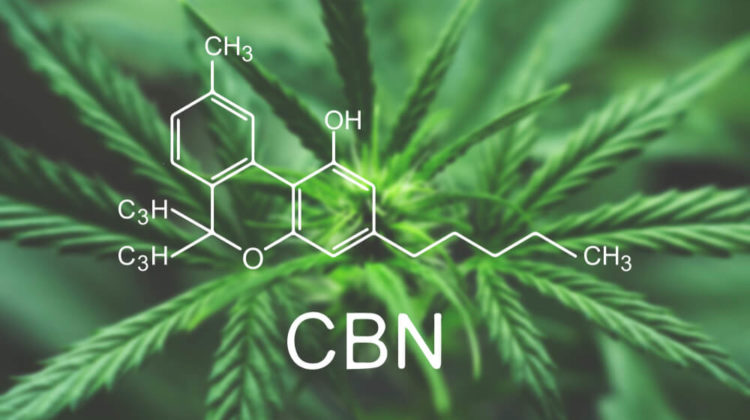
A new day, a new cannabinoid. Research shows that there are more than 100 different cannabinoids in cannabis. When thinking of cannabinoids, people’s minds tend to go to the two most popular: cannabinoid (CBD) and tetrahydrocannabinol (THC). With new research being conducted on cannabis, a cannabinoid called cannabinol (CBN) is emerging as a popular option for cannabis users. But, what is CBN?
What is CBN?
CBN is a non-psychoactive cannabinoid that is formed from aged THC. CBN gets better with age, making it the fine wine of cannabis. Aside from time, the degradation of THC happens when the plant is exposed to excessive amounts of light and oxygen, creating CBN overtime.
The United Nations Office of Drug and Crime conducted a study to see how long it would take THC in the flower to transition into CBN. After four years, researchers discovered THC levels in the flower dropped by more than half. The THC degrades more during the first two years of storage, but the longer the flower sits, the more the THC deteriorates to become CBN.
The Sleepy Cannabinoid
What separates CBN from other cannabinoids is its potent sedative effects. That’s why it’s called the sleepy cannabinoid.
A 1975 study conducted on rabbits, mice, and rats was to see if CBN and THC would help promote sedation. The results showed it helped with sleep deprivation and irritability, and promoted sedation and calmness.
While some people may turn away from cannabis strains that make them sleepy, there are other benefits of CBN that may just peak a consumer’s interest.
Pain Relief
The sleepy cannabinoid can also help relieve pain and inflammation. In fact, new research has shown that CBN influences the activity of neurons that are sensitive to capsaicin. Capsaicin is the compound in chili peppers that gives them their spiciness. However, capsaicin is also used in topical pain relieving creams, according to the U.S. Pharmacist journal.
In the human body, capsaicin signals nerves that are responsible for pain signaling and perception. CBN triggers the same nerves as capsaicin, giving it the same pain-relieving qualities.
Appetite-Stimulant
CBN stimulates its user’s appetite. This is one difference between CBD and CBN. While CBD acts as an appetite-suppressor, CBN increases appetite. It can also help with nausea.
As such, CBN can be used as a therapy by people who struggle with maintaining their appetites.
For instance, in a 2012 study, researchers treated rats with CBN and other cannabinoids to see if their eating patterns changed. The results showed the cannabinol increased food intake and the rat’s overall meal size significantly.
Cancer Fighting
Additional studies have shown that CBN may stop the growth of tumors. While more research is needed, scientists have found CBN to be one of the cannabinoids that reduced the size of tumors found in the lungs.
Where to Find CBN?
CBN, like other cannabinoids including CBD, comes in different forms, from tablets, to capsules, to oil. Because of its sedative properties, users can find CBN in products that promote sleep.
Some strains that are known to have high CBN levels include: Blackberry, Bubblegum, Durban Poison, Lemon Kush, Purple Cadillac, Super Green Crack. These strains contain more than .3% CBN overall, according to Way of Leaf, a medical cannabis resource.
However, consumers may find it difficult to find many products containing or labeled with CBN at their local dispensary. Take a look at test results for details on a product’s cannabinoid profile. If there’s no CBN, don’t worry. If there happens to be flower lying around the house, just simply bag it, store it, and wait for the CBN to form. Exposing the flower to air and light might speed up the degradation process. While this process may not seem instant, it can be a little DIY science project to do at home.
Even though THC and CBD are still extremely popular by cannabis users, don’t sleep on the idea of CBN. More research still needs to be conducted on CBN, but — as the science grows —CBN may just be the new hot product on the market in time.


Leave a Reply